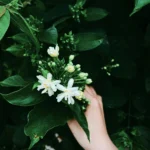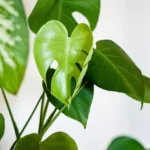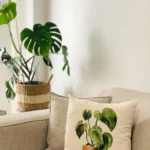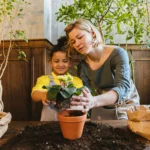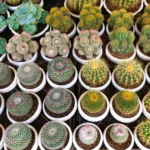Lipstick Plant Care: A Complete Guide for Thriving Indoor Beauty
Indoor plants are much more than decor; they add color, freshness by cleaning the air, and liveliness inside your house. There is one plant that does all this with its sheer difference-the lipstick plant. Need to know about Lipstick Plant Care? Here’s a complete guide that will lead you to grow the plant as joyfully as ever.
Getting its name from tubular bright red flowers that look much like a tube of lipstick, the lipstick plant “Aeschynanthus radicans” is quite a catch to hang near a window or place high on a shelf with its trailing vines covered in glossy, evergreen leaves. However, its beauty does require some attention, and here the care of a lipstick plant comes in to ensure your plant thrives indoors.
The following guide will take care of the floriculturist and the amateur alike through everything that needs to be known to keep the lipstick plant happy, from light requirements to watering schedules, humidity tips, and troubleshooting common problems. Let’s dive in!
Understanding the Lipstick Plant: Characteristics and Origin
This plant originates from tropical parts of Southeast Asia, growing in filtered light and warm, humid conditions. Knowing such a native habitat aids in reminding how to create similar indoor growing conditions, something very important in lipstick plant care.
A member of the Gesneriaceae family, lipstick plants are epiphytes native to their environment, which in simple terms means they grow on other plants, sometimes, but without harming them. With cascading growth and a pop of colorful blooms, they add some excitement to an indoor garden display.
Check out our ultimate guide on caring for spider plants for more helpful insights: Caring for Spider Plants – The Ultimate Guide to a Healthy, Thriving Houseplant.
The Importance of Proper Lighting for Lipstick Plants
One of the critical elements that go into lipstick plant care is the right amount of light. This plant requires lots of bright, indirect light, and without proper light, this plant will never be able to facilitate the development of blooms.
How Much Light Does a Lipstick Plant Need?
If possible, lipstick plants prefer to have 5 to 6 hours of bright, indirect light every day. Place your plant near a window that faces south or east to ensure that it gets an awful lot of sunlight without getting any direct sunlight. On that note, you should not expose your lipstick plants to too much direct sunlight since this might cause the scorching of leaves and dehydration. For that reason, place your plant a few feet away from the window or across sheer curtains.
If your lipstick plant does not bloom, then it may need more light. You could move it to a brighter location, but be sure not to expose it to direct sunlight. If it’s too low-light, you could add some grow lights and certainly do so during the weaker-intensity months of winter.
Temperature and Humidity Requirements
The ideal temperature for the lipstick plant ranges from 70°F to 80°F (21°C-27°C), which is like the temperature in the tropics. Sudden changes in temperature, especially cold drafts, can be very harmful to the plant.
Avoiding Temperature Stress
Try to keep the temperature in the room as constant as possible without wild fluctuations. Temperatures below 50°F may result in leaf drop and discoloration. If your plant is sitting near a window during winter, ensure it isn’t touching any cold glass that can harm its leaves.
Humidity Needs
Indoor gardeners adore the lipstick plant for being so accommodating with average household humidity. Yes, it does love high humidity of about 50-60%, but it can make do quite happily in less humid conditions. If you happen to be in one of those arid climates, consider giving your plant a boost in humidity by:
- Misting: Mist leaves lightly once or twice a week.
- Humidifier: Keep the moisture levels consistent with a humidifier.
- Pebble Tray: Set your pot on top of a tray filled with pebbles and water, so the pot itself isn’t in the water.
Watering the Lipstick Plant: Finding the Balance
Proper watering in lipstick plant care is important, as this plant may have its roots rot if it is watered too much. On the other hand, allowing it to totally dry out will stress the plant enough to cause a drop of the leaves.
How Often Should You Water a Lipstick Plant?
The lipstick plant thrives on soil that is permitted to dry slightly between waterings. A good rule of thumb will be to wait until the top 1 to 2 inches of soil are dry before repeating the watering process. This will roughly translate to about once every 7 to 10 days, depending on the season and humidity levels.
It needs more frequent watering during its active growing season in spring and summer than when it slows down during winter. That is to say, the soil needs to have enough water that comes out from the bottom holes but should be allowed to dry out completely afterward. It should be avoided to allow the plant to sit in standing water, or root rot may further create problems for it.
Bottom Watering Technique
Most indoor gardeners swear by bottom watering regarding Lipstick plants. Water the plant from the bottom by setting it in a saucer of water so that the soil draws moisture in through the drainage holes. This way, it will take exactly the amount of water it needs to avoid overwatering. In about 20-30 minutes, remove the pot from underneath the saucer and drain excess water.
Soil and Potting Mix: Getting It Right
Care for the lipstick plant calls for the right potting mix. It will appreciate a well-draining, airy mix of soil that would be close to its natural epiphytic growing conditions. A mix of peat moss, perlite, and orchid bark works by retaining moisture while providing great drainage.
Choosing the Right Pot
It is always great to pick a pot with holes so it doesn’t get waterlogged in there. The plants really thrive in hanging baskets since the beautiful vines cascade down, adding beauty to the surroundings.
Repot your lipstick plant into fresh mix every 1-2 years as it outgrows its pot. Besides refreshing the soil for the plant, repotting provides space for root development and results in a much healthier and flamboyant plant.
Fertilizing Your Lipstick Plant
Special attention is given to fertilizing in the care for lipstick plants during the active season of growth. Indeed, these plants quite often need to be fed regularly to stimulate growth and blooming.
When and How to Fertilize
Feed your lipstick plant every 2-4 weeks in spring and summer, using a balanced, water-soluble fertilizer. You can cut back on fertilizing in the fall and winter to once a month, or not at all, since the plant’s growth will be so much slower.
If you want to promote flowers, a high-phosphorus fertilizer will be best. For an organic approach, fish emulsion or seaweed extract works, but usually carries a strong smell with it. If you don’t have the desire to mess around, a general synthetic houseplant fertilizer will work just fine too.
Pruning and Maintenance
Pruning does help the plant maintain its shape and sends a signal that growth is fuller. Trimming back leggy vines regularly will keep it compact and bushy.
How to Prune a Lipstick Plant
Pruning should be done with a pair of sharp, sterilized scissors. Cut the stems back above a leaf node to encourage new growth from the cut site and make it a bit bushier. Remove dead or yellowing leaves to help keep the plant healthy and pest-free.
Don’t miss our comprehensive guide on orchid care to help revive your orchids and keep them healthy: Orchid Plant Care Guide – How to Revive Your Orchids and Keep Them Healthy.
Common Problems and Solutions
Even with ideal lipstick plant care, you can still find yourself facing some very common problems. Here’s how to identify and solve them.
Yellow Leaves
Yellowing leaves signal overwatering, underwatering, or temperature stress. Check the soil moisture and adjust to your watering schedule. Move plants to a warmer location if cold drafts are affecting it.
Root Rot
It is generally due to overwatering or poor drainage. If there’s a foul odor from the soil or the leaves are droopy, it is time to investigate the roots. Healthy roots are white and firm; when they start to rot, they turn brown and mushy. Cut off the affected roots and replant into fresh soil.
Pest Issues
The most common pests that afflict the lipstick plant are spider mites, mealybugs, and aphids. Check your plant from time to time for pest issues that show up as webbing or sticky residue on the plant. Infestations are treated by wiping the leaves with a mild insecticidal soap or using neem oil.
Wrapping Up: Mastering Lipstick Plant Care
Care for a lipstick plant, and this may prove to be a very rewarding experience. The plant bearing bright red flowers has trailing vines that add color and life to any indoor space. If the bright light, proper watering, right temperature, and humid atmosphere are all availed to the plant, it may thrive, bloom continually, and grow beautifully year after year.
If you are thinking of indoor plants, the lipstick plant is one of those you should have. Due to its unique look and low-maintenance care, it’s a great plant for a beginner who has very little experience and for an experienced indoor gardener. Feel free to experiment with this plant-propagate cuttings, experiment with light, and share your experiences with fellow plant lovers!



